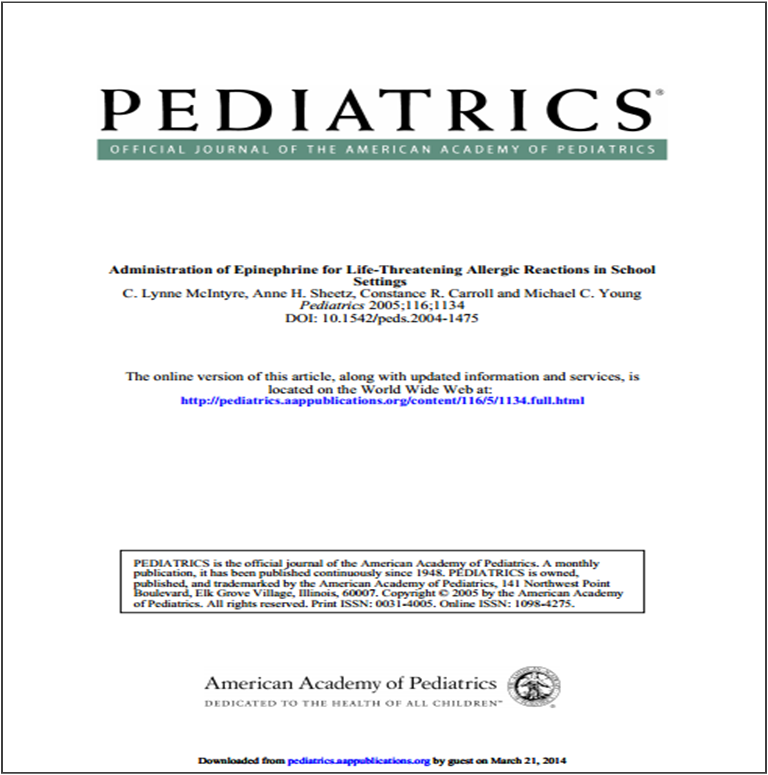The Management of Life Threatening Allergies in School: Lessons Learned from Massachusetts
Massachusetts Performance Improvement Program

In 2001 the MDPH School Health Unit initiated a performance improvement project to “(1) determine the frequency of epinephrine in schools, (2) examine the circumstances around anaphylactic events, (3) assess current practices that address the issue of life-threatening allergies in school, and (4) identify opportunities for improvement from both a preventive and treatment perspective .” The voluntary reports of epinephrine administration from 109 schools from September 2001 to August 2003 indicated that:
• In 24% of the 115 cases, the individual was not known to have an allergy;
• 31% had allergies to multiple substances; and
• 25% had an allergy to peanuts or tree nuts only.
McIntyre CL., Sheetz, A., Carroll, C., Young, M. Administration of epinephrine for life threatening allergic reactions in school settings. Pediatrics, 2005; 116(5):1134-1140.
In 2004 the MDPH revised its school medication regulations to (a) include guidance for before and after school programs and (b) require reporting to the MDPH whenever an epinephrine is administered for a life threatening anaphylactic event in any public or private school in the Commonwealth.
All excerpts taken from the Management of Life Threatening Allergies in School: The Massachusetts Experience.
Written by: Michael Pistiner MD, MMSc and
Anne H. Sheetz RN, MPH, NEA-BC.
This piece was originally published in the American Academy of Pediatrics, Council on School Health, Spring/Summer 2009 Newsletter.
We thank the AAP for granting permission to post and to update mandated reporting data within this article.
